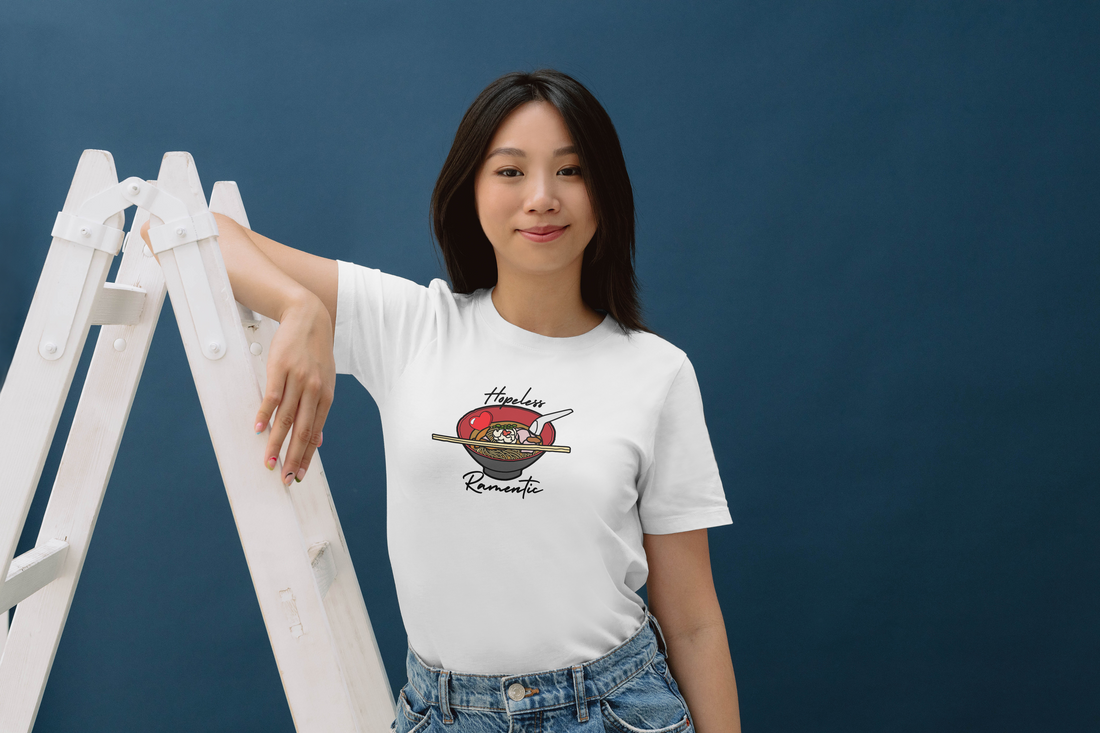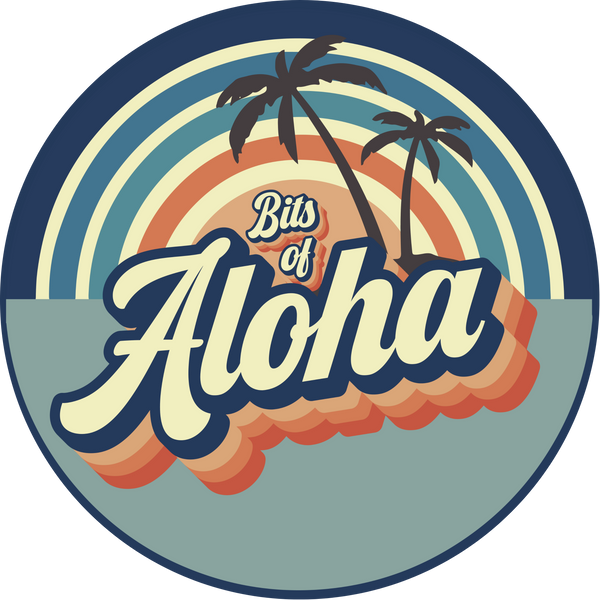
Streetwear Graphic Design After 2020: How Hawaii Brands Transformed During COVID and Beyond
Share
The last five years have redefined everything in fashion—from how we shop to what we wear and what our clothing says about who we are. In the world of streetwear, where self-expression, cultural identity, and graphic storytelling reign supreme, the impact of the COVID-19 pandemic and the societal shifts of the 2020s has sparked a profound transformation.
And nowhere is that transformation more visible—or more distinctive—than in the evolution of Hawaii fashion and streetwear design. Hawaiian brands, rooted in Aloha spirit and Hawaiian culture, have embraced the upheaval, producing bold, culturally infused graphic designs that speak to identity, resilience, and belonging in a post-pandemic world.
Let’s explore how global streetwear has changed since 2020, and how Hawaii’s homegrown labels are evolving alongside—and sometimes ahead of—the trend.
Streetwear in the 2020s: From Logos to Meaning
Before 2020, streetwear was dominated by loud logos, ironic slogans, and the ubiquity of hype culture—driven by drops, collaborations, and resale value. But the COVID-19 pandemic altered priorities. People craved comfort, authenticity, and emotional connection. Graphic design in streetwear shifted from being merely aesthetic to expressive.
Designers began using shirts and hoodies as canvases for storytelling. Graphics became more introspective, rooted in social justice, mental health awareness, community pride, and cultural preservation. Instead of flexing exclusivity, brands leaned into vulnerability, solidarity, and hyper-local identity.
That transition paved the way for a broader appreciation of cultural narratives, especially from underrepresented communities—including Native Hawaiian voices.
Pandemic-Era Influence: Design Under Lockdown
The early COVID-19 era (2020–2021) brought a wave of design experimentation and localization. With traditional retail shuttered, brands turned to e-commerce and digital drops, often releasing capsule collections that addressed themes of isolation, unity, and survival.
In Hawaii, the lockdown period spurred a renaissance in local streetwear. Designers had more time to reflect, create, and draw deeply from their surroundings—land, language, and lineage. Many pivoted to print-on-demand models or launched new online storefronts, allowing them to operate lean while staying connected to a global audience.
Graphic tees emerged as cultural signposts. Artists referenced ʻōlelo noʻeau (Hawaiian proverbs), native flora and fauna, historical resistance movements, and family values. It wasn’t just merch—it was a message.
Hawaii’s Streetwear Evolution: From Tourist Tees to Cultural Statements
For decades, mass-market Aloha shirts and souvenir tees defined Hawaii’s image abroad. But today’s Hawaiian brands are rewriting the narrative. Labels like Kealopiko, Sig Zane, Fitted Hawaii, David Shepard Hawaii, and new emerging collectives have reimagined Hawaii designs with a blend of contemporary streetwear aesthetics and Indigenous symbolism.
Fitted Hawaii
A cornerstone of the Hawaii streetwear scene, Fitted has doubled down on its mission of "Aloha Served Daily" by releasing limited-run drops rooted in storytelling. Each graphic is steeped in Native Hawaiian history, spirituality, or community memory. Since 2020, their pieces have featured themes of resistance, sovereignty, and cultural revival—delivered through urban silhouettes like oversized tees, hoodies, and hats.
Kealopiko
More than just a fashion label, Kealopiko is an educational platform disguised as apparel. Their designs are collaboratively created by artists and cultural practitioners, often featuring ʻōlelo Hawaiʻi and motifs from Hawaiian cosmology. During and after the pandemic, the brand continued to infuse its work with themes of environmental stewardship and ancestral knowledge—offering consumers a way to wear their values.
David Shepard Hawaii
Known for his hand-drawn botanical illustrations, Shepard’s work bridges fine art and fashion. His pieces often showcase endangered Hawaiian species or native ecosystems, combining ecological awareness with high-end street style. The pandemic saw a surge in appreciation for nature, and David Shepard’s designs became even more resonant as symbols of connection to the land (ʻāina).
Global Meets Local: Collaborations and Cultural Export
Since 2020, Hawaii’s streetwear brands have also begun connecting with the broader fashion world through collabs and mainland distribution. With the rise of social media and e-commerce platforms like Shopify, Hawaiian labels are no longer confined to the islands—they’re shipping Aloha worldwide.
These collaborations help expand awareness of Hawaiian culture, but they also present challenges. How do brands balance visibility with cultural integrity? How do you scale without diluting the meaning behind the design?
Some, like Manaola Yap, have addressed this by controlling their brand narratives tightly—ensuring that every symbol, graphic, and fabric used in their collections reflects authentic Native Hawaiian protocols and intentions.
Sustainability and Slow Fashion in Hawaii
Another key shift in post-2020 streetwear—especially in Hawaii—has been a return to slow fashion. The disruption of global supply chains during the pandemic prompted many designers to embrace local sourcing, small-batch production, and natural dyes. This aligns with Native Hawaiian values of sustainability, reciprocity, and respect for the land.
In place of mass production, Hawaiian designers are now offering limited edition, deeply intentional pieces that often come with story cards or QR codes that explain the cultural context of the design. This builds a relationship between buyer and maker—one rooted not in hype but in pono (righteousness and balance).
Looking Ahead: The Future of Hawaiian Streetwear Graphics
The evolution of streetwear graphic design over the past five years has created space for more voices, more nuance, and more cultural fluency. Hawaiian brands are leading that charge—not as trend-followers, but as trend-setters with a deep sense of purpose.
Expect to see more integration of AR/VR in Hawaii-based streetwear drops, NFTs tied to culturally significant artwork, and continued growth in Indigenous fashion week participation. As the world looks for meaning in what it wears, Aloha wear—infused with heritage, modern design, and island resilience—is primed for center stage.
Conclusion: Wearing Aloha with Intention
From tourist tees to trend-defining graphics, Hawaiian streetwear has come a long way. The pandemic may have disrupted fashion globally, but it also gave rise to a more thoughtful, story-driven, and culturally aware design movement—especially in the islands.
In today’s fashion landscape, a graphic tee isn’t just an outfit—it’s a voice. And thanks to Hawaii’s growing streetwear scene, that voice is saying: We are still here. We are thriving. And we wear Aloha with intention.
Keywords:
Hawaii fashion, Hawaiian culture, streetwear design, Hawaii streetwear, Aloha wear, Hawaii designs, Hawaiian brands, COVID fashion trends, island fashion
